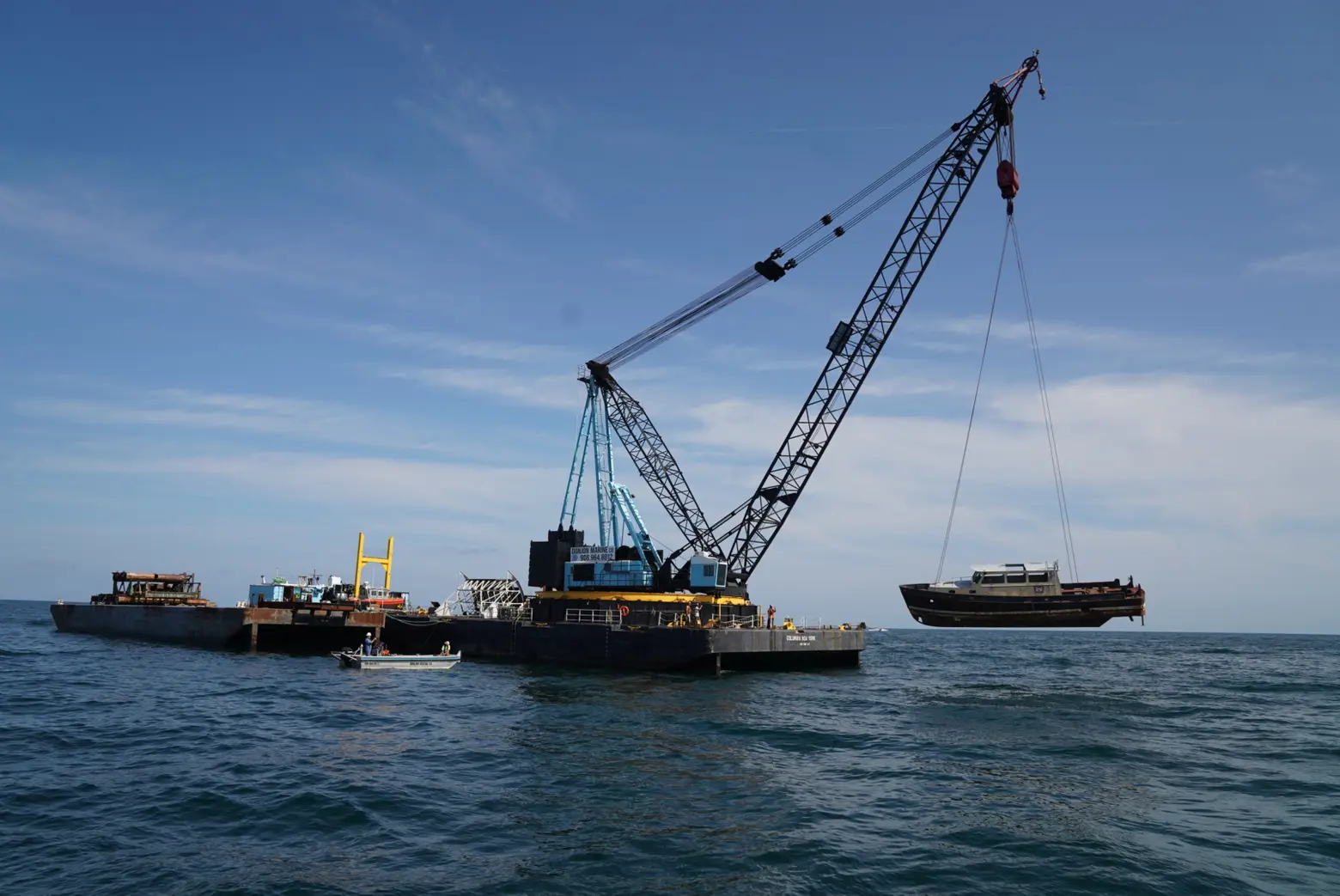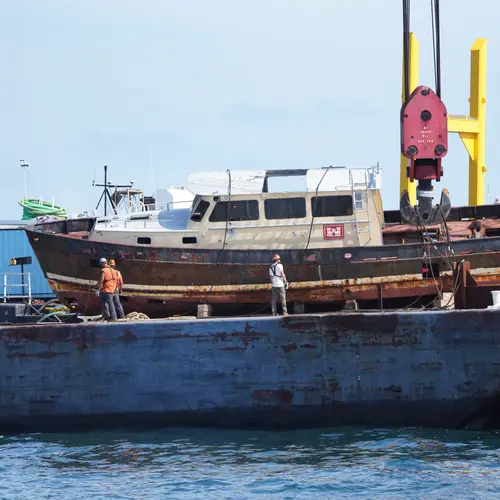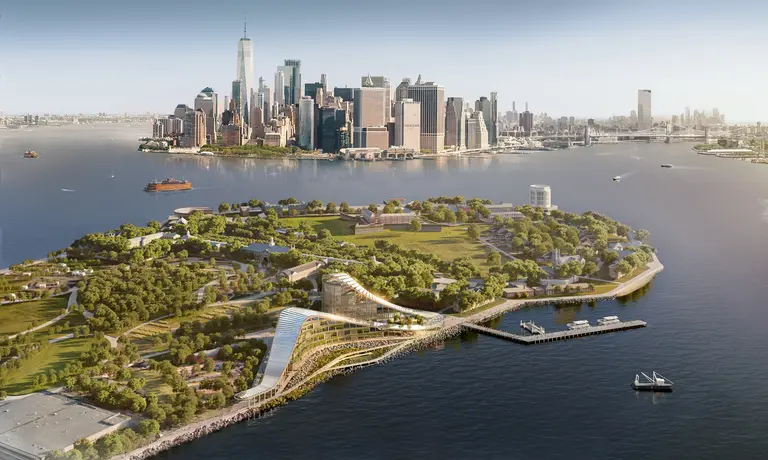Parts of the old Kosciuszko Bridge and Staten Island Expressway become an artificial reef

Images via Governor Andrew Cuomo’s Flickr
Pieces from the old Kosciuszko Bridge are now underwater off the coast of Fire Island, as part of New York State’s ongoing artificial reef expansion efforts. Governor Cuomo launched the second year of the largest artificial reef expansion in state history this past weekend. Recycled materials from the Staten Island Expressway, the Kew Gardens, and Kosciuszko bridges, as well as retired U.S. Army Corps of Engineers steel vessels, were cast into the water at Fire Island Reef, where they will create new marine habitats and boost Long Island’s fishing and diving industries.


“New York State is doing more than any state in the United States when it comes to climate change and protecting the environment,” Governor Cuomo said. “Reefs are great for the environment and the economy, and the new reefs created under our comprehensive artificial reef program are already incredibly successful. We are going to continue this success by bolstering the Fire Island reef with an assortment of material, and show that New York, and Long Island in particular, can and will be the showcase to demonstrate how to build a green economy and a green environment for the rest of the nation.”

The effort is part of the Governor’s Artificial Reef Initiative, which deploys large volumes of recycled materials that have been cleaned of contaminants from the New York State Thruway Authority, NYPA/Canal Corporation, and New York City Department of Transportation, among other sources, onto New York’s 12 artificial reef sites: two in the Long Island Sound, two in the Great South Bay, and eight in the Atlantic Ocean. Fire Island Reef, located two miles from shore with a depth of 62-73 feet, now spans over 744 acres.
Last year, the initiative deployed over 8,805 cubic yards of old Tappan Zee Bridge materials, 13 former Canal Corporation vessels, 4,700 tons of jetty stone, two 70-ton NYPA turbines and more than 170 tons of DOT material, including steel pipes, trusses, and I-beams, to the reefs. Marine biologists have documented the rapid colonization of marine life, including sponges, mussels, bryozoans, barnacles, anemones, and reef-associated finfish.
This isn’t a new approach, construction of New York’s first artificial reef dates back to 1949. It’s similar to the 10-year program by the MTA that deployed close to 3,000 old subway cars into the ocean off the coasts of New Jersey, Delaware, Maryland, Virginia, South Carolina, and Georgia, but has since concluded.
There are six more reef expansions planned for later this year, at Atlantic Beach, McAllister Grounds, Yellowbar, Kismet, Matinecock, and Twelve Mile.
RELATED:
- Photo exhibit shows 10 years of subway cars dropped in the Atlantic Ocean to become artificial reefs
- PHOTOS: Go Inside the NYC Subway Cars Dumped in the Atlantic Over a Decade Ago
- VIDEO: Fly Over the Forgotten Vessels of Staten Island’s Arthur Kill Ship Graveyard
- There’s a trolley car graveyard buried without a trace in Canarsie, Brooklyn
Images via Governor Andrew Cuomo’s Flickr

































